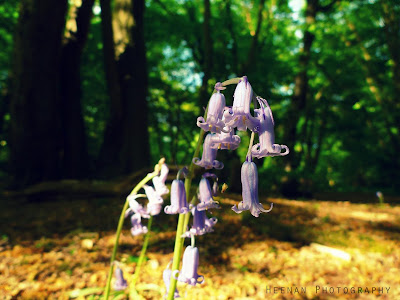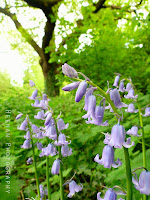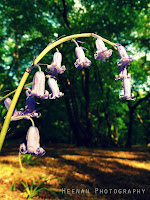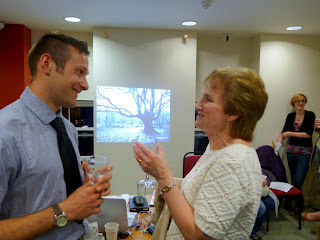 |
| Native Bluebells (Hyacinthoides non-scripta) in Epping Forest |
 |
| Ancient woodlands such as Epping Forest are a common haunt for bluebells, which do well in shady places |
There is an imposter in the countryside however, a blue alien. The imported Spanish bluebells have been very successful, hybridising with the native flowers and spreading to many of our gardens and other green spaces. It's even invading the woodland strongholds of the native bluebells, and I found some suspicious bluebells on my walk! How do we tell the two types of bluebell apart? The Guardian offer a few tips, and there is a very useful page on the Natural History Museum website which explains how to identify your bluebells, but some of the basic differences to look for are: Spanish bluebells have paler flowers, no scent, and an upright stalk; native bluebells are scented, they arch or droop over, and their leaves are rolled up.
 | ||||||||
| Spanish bluebells are paler and more upright, and these specimens on the edge of Epping Forest seem to fit the bill |
 |
| Native bluebells have a stem that arches over at the end |
The bluebells may have arrived late this year, but they are here now - so why not go explore your local countryside to see them! Talk about your own sightings and favourite bluebell spots, or discuss other signs of Spring! Post on our Facebook page or tweet to #SpringIsTheThing!




